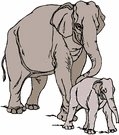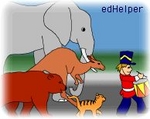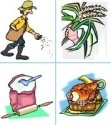
Worksheets and No Prep Teaching Resources
Reading Comprehension Worksheets
Animal Themes
Mammals

Animal Themes
 Worksheets and No Prep Teaching Resources Reading Comprehension Worksheets Animal Themes Mammals |
 Animal Themes |
| edHelper's suggested reading level: | grades 6 to 8 | |
| Flesch-Kincaid grade level: | 7.16 |
| Cattle |

|
 1 Cattle have been domesticated for thousands of years. Before the Industrial Revolution of the 18th century, cattle were used to pull carts or to plow fields by farmers all over the world. Nowadays, farmers prefer using machines. It is a rare scene to see farmers using cattle as farm helpers. Although cattle's role in farming has diminished since the invention of machines, they are still found on farms. On today's farms, cattle are mainly raised for their meat, hides (leather), and milk.
1 Cattle have been domesticated for thousands of years. Before the Industrial Revolution of the 18th century, cattle were used to pull carts or to plow fields by farmers all over the world. Nowadays, farmers prefer using machines. It is a rare scene to see farmers using cattle as farm helpers. Although cattle's role in farming has diminished since the invention of machines, they are still found on farms. On today's farms, cattle are mainly raised for their meat, hides (leather), and milk. |
Create Weekly Reading Books
Prepare for an entire week at once! |
| Leave your feedback on Cattle (use this link if you found an error in the story) |
 |
Animal Themes
|
 |
Mammals
|
 |
Farm
|
|
|